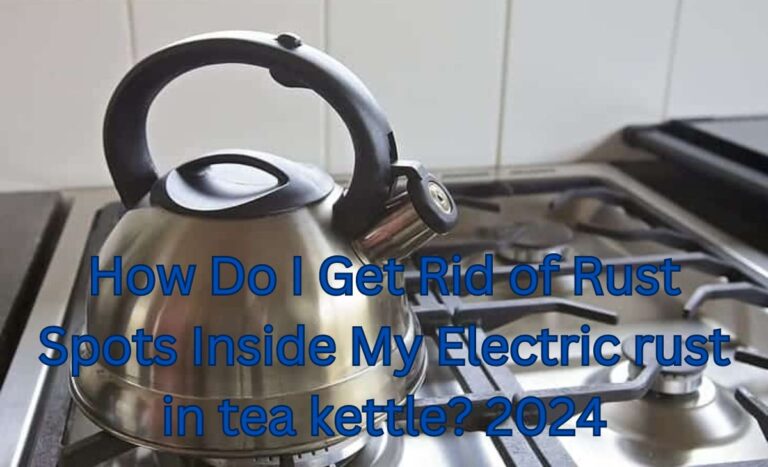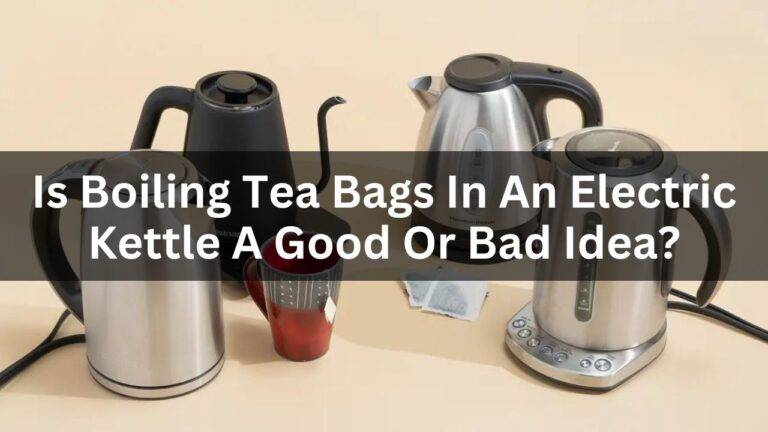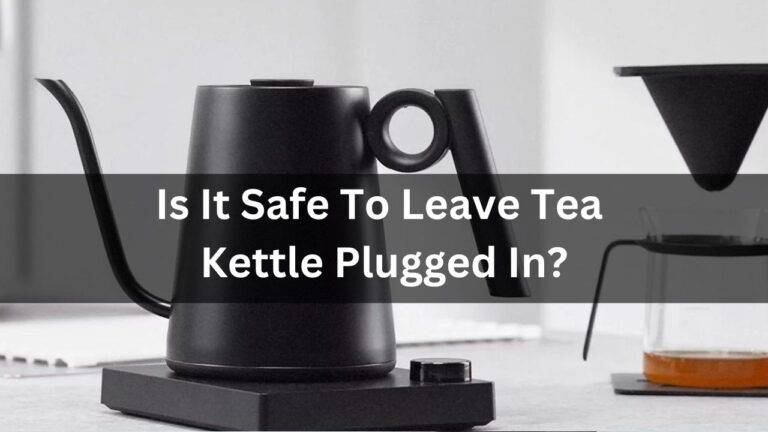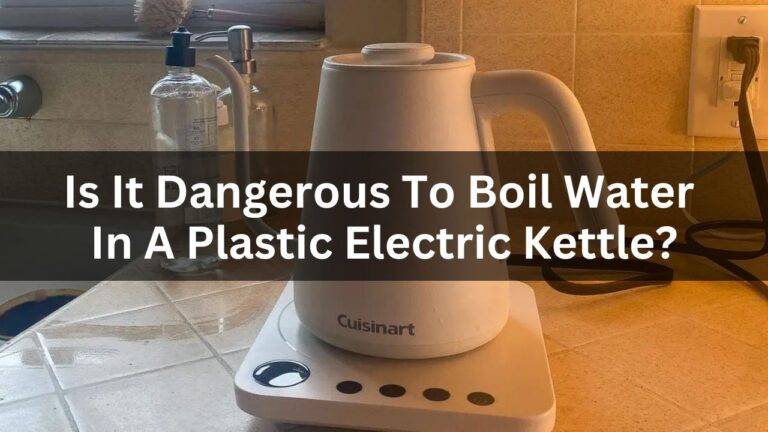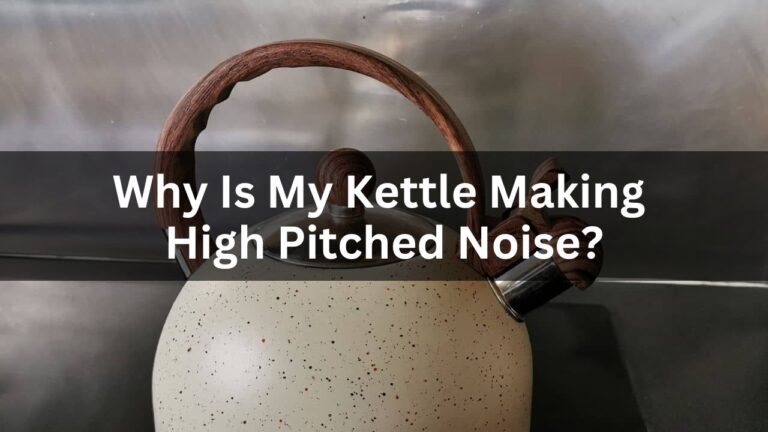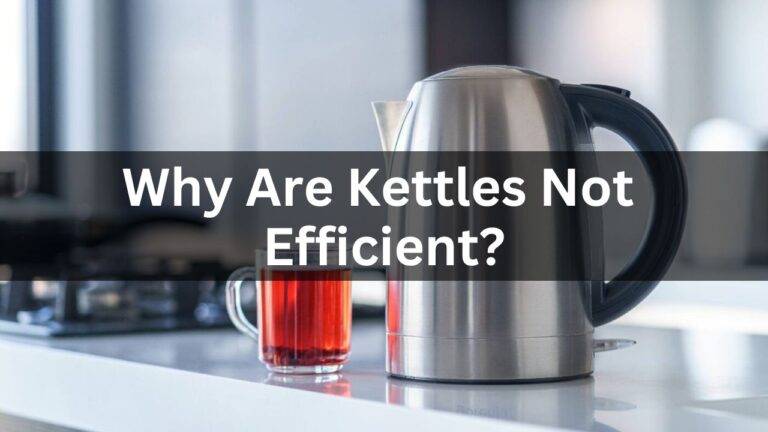How Do You Prevent Kettle From Temperature Swings?
To prevent temperature swings in your kettle, it’s crucial to invest in a high-quality appliance that offers precise temperature control. Opt for kettles with digital temperature settings or built-in thermometers to ensure accuracy. Pre-boiling the water and allowing it to cool to the desired temperature can also mitigate fluctuations. Additionally, if your kettle has a warm-up period, ensure it…
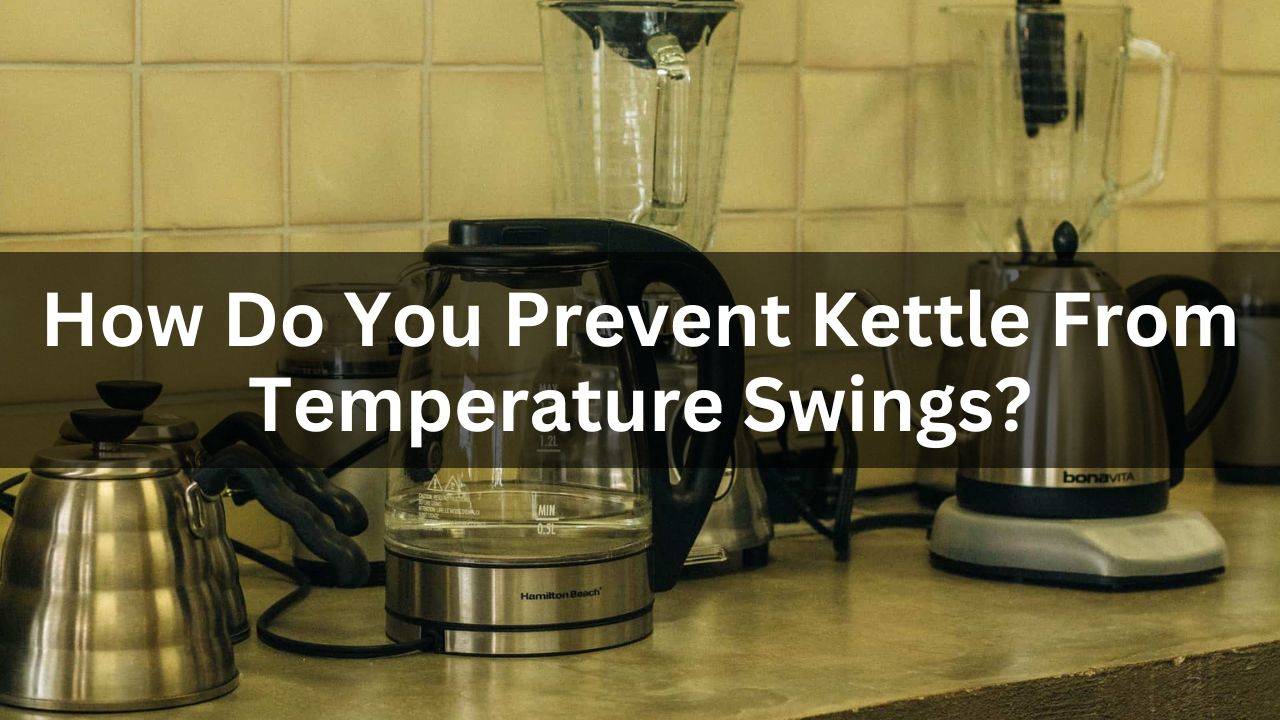
To prevent temperature swings in your kettle, it’s crucial to invest in a high-quality appliance that offers precise temperature control.
Opt for kettles with digital temperature settings or built-in thermometers to ensure accuracy. Pre-boiling the water and allowing it to cool to the desired temperature can also mitigate fluctuations.
Additionally, if your kettle has a warm-up period, ensure it reaches the target temperature before pouring the water.
By following these tips, you can enhance the consistency of water temperature, ultimately improving the quality of your tea or coffee brewing experience.[1]
Contents
- 1 Understanding Kettle Temperature Swings
- 2 Troubleshooting Common Kettle Temperature Issues
- 3 Can using a kettle with a single-wall design contribute to temperature swings?
- 4 How do I know if my kettle is experiencing temperature fluctuations?
- 5 How does the conductivity of the kettle material influence temperature control?
- 6 Should I be concerned if my kettle takes longer than usual to reach the desired temperature?
- 7 Are there specific cleaning practices to prevent mineral buildup in my kettle and maintain consistent heating?
- 8 Tips for Different Types of Beverage:
- 9 Final Words:
- 10 FAQs
Understanding Kettle Temperature Swings
Causes of Temperature Fluctuations in Kettles
External Factors (e.g., Ambient Temperature):
Ambient temperature plays a significant role in affecting the performance of a kettle. In colder environments, kettles may take longer to reach desired temperatures, leading to potential fluctuations.
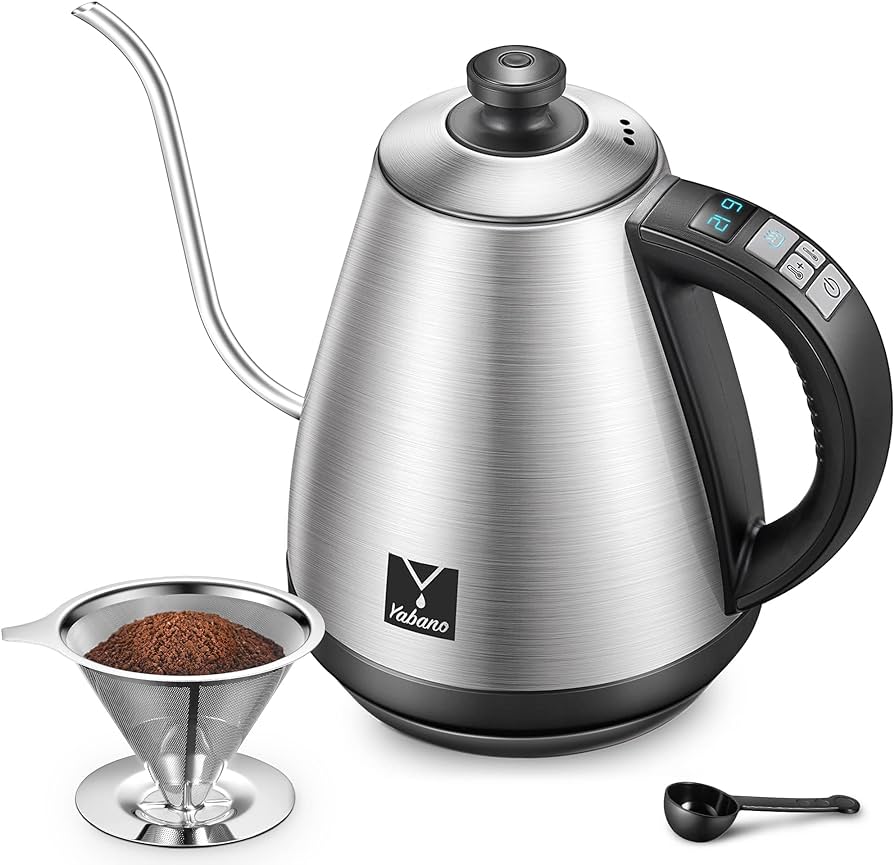
Conversely, in warmer surroundings, kettles may heat up more quickly, but this can also result in overshooting the intended temperature.
Kettle Design and Materials:
The design and construction materials of a kettle can impact its ability to maintain a stable temperature. Single-wall kettles, for instance, may be more susceptible to external temperature changes compared to double-wall insulated kettles.
The conductivity of the kettle material can influence how quickly heat is transferred to the water, affecting temperature control.[2]
Impact of Temperature Swings on Various Beverages
Tea:
- Different types of tea require specific water temperatures for optimal flavor extraction.
- Green tea, for example, is best brewed at lower temperatures (around 160–180°F or 71–82°C), while black tea may require higher temperatures (around 200–212°F or 93–100°C).
- Temperature swings can result in over-steeping or under-steeping, leading to a less flavorful or bitter cup of tea.[3]
Coffee:
- Coffee enthusiasts emphasize the importance of precise temperature control during brewing.
- The ideal water temperature for coffee extraction is typically between 195–205°F (90–96°C).
- Temperature fluctuations can impact the extraction process, affecting the balance of flavors and the overall quality of the coffee.
Other Hot Beverages:
- Various hot beverages, such as hot chocolate or instant soups, may have specific temperature requirements for optimal preparation.
- Inconsistent temperatures can affect the dissolution of ingredients, resulting in a subpar taste and texture.
- Temperature swings may also impact the safety of preparing certain beverages that require specific temperature thresholds to ensure proper cooking or dissolving.[4]
Also Read: Can I Have A Kettle In My University Room?
Troubleshooting Common Kettle Temperature Issues
1. Inconsistent Heating:
The kettle heats water unevenly, leading to temperature inconsistencies.
Troubleshooting:
- Descaling the kettle can improve heating efficiency.
- Faulty wiring or loose connections can cause uneven heating.
2. Rapid Temperature Fluctuations:
The kettle experiences sudden spikes or drops in temperature during operation.
Troubleshooting:
- Maintaining the recommended water level can prevent rapid temperature changes.
- Loose or damaged components can disrupt the temperature control mechanism.
- Fluctuating power supply can lead to erratic temperature variations.
3. Failure to Reach Desired Temperature:
The kettle struggles to reach the set temperature, taking longer than usual.
Troubleshooting:
- A faulty or calcified heating element may need cleaning or replacement.
- A malfunctioning thermostat can hinder the kettle’s ability to reach and maintain the desired temperature.
- Inadequate power input can result in slower heating times.[5]
4. Overheating and Boiling Over:
The kettle exceeds the set temperature, boiling water excessively and potentially causing spills.
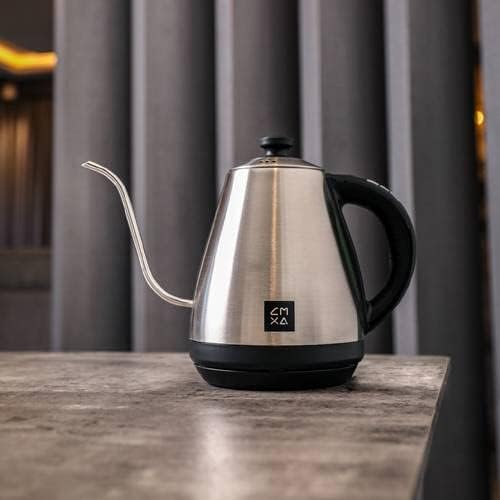
Troubleshooting:
- Calibrate or replace the thermostat to ensure accurate temperature control.
- Overfilling the kettle can lead to boiling over; always adhere to the recommended maximum fill level.
- Obstructions in the spout or other components may cause overheating.
5. Temperature Indicator Inaccuracy:
The temperature display or indicator on the kettle is inaccurate.[6]
Troubleshooting:
- Follow the manufacturer’s instructions to recalibrate the temperature sensor.
- Dust or debris on the temperature sensor can affect accuracy.
- Ensure the kettle is operating in an environment within its specified temperature range.
6. Unusual Sounds During Operation:
Unusual noises, such as rattling or humming, occur while the kettle is heating.
Troubleshooting:
- Secure any loose components, such as loose handles or base elements.
- Foreign objects inside the kettle may cause unusual sounds; clean the interior thoroughly.
- A damaged or worn-out heating element may produce unusual noises; replace if necessary.[7]
Also Read: How Do I Get Rid Of The Plastic Taste From A New Electric Kettle?
Can using a kettle with a single-wall design contribute to temperature swings?
The material and design of your kettle can indeed affect temperature control. Single-wall kettles may be more susceptible to external temperature changes, potentially leading to fluctuations.
Insulated, double-wall kettles are often more effective in maintaining stable temperatures.[8]
Also Read: Does The Steel Body Of A Kettle Get Shocked?
How do I know if my kettle is experiencing temperature fluctuations?
Signs of temperature fluctuations include uneven heating, erratic boiling, or failure to reach the set temperature. If your beverages taste inconsistent or if the heating process seems irregular, your kettle may be experiencing temperature swings.[9]
How does the conductivity of the kettle material influence temperature control?
The conductivity of the kettle material plays a role in how efficiently heat is transferred to the water. Materials with higher conductivity, like stainless steel, can transfer heat more rapidly, affecting the speed at which the water reaches the desired temperature. This can impact the overall temperature control of the kettle.[10]
Should I be concerned if my kettle takes longer than usual to reach the desired temperature?
Yes, an unusually prolonged heating time may indicate an issue with your kettle. Possible causes include a faulty heating element, mineral buildup, or an inadequate power supply. It’s advisable to troubleshoot the cause to ensure your kettle operates efficiently.[11]
Are there specific cleaning practices to prevent mineral buildup in my kettle and maintain consistent heating?
Yes, regular descaling is essential to prevent mineral buildup in your kettle. Use a descaling solution or a mixture of vinegar and water to remove scale deposits.
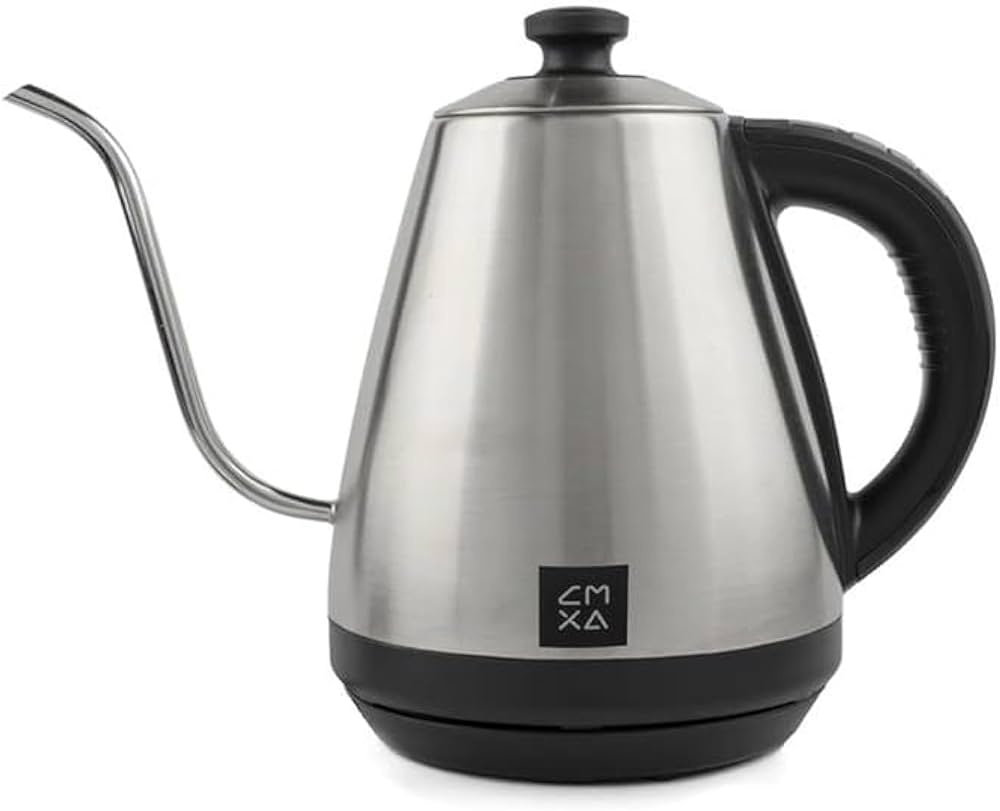
Pour the solution into the kettle, let it sit, and then rinse thoroughly. Clean the interior regularly to maintain consistent heating and extend the lifespan of your kettle.[12]
Also Read: Is It Dangerous To Boil Water In A Plastic Electric Kettle?
Tips for Different Types of Beverage:
- Tea: Use lower temperatures (160–180°F or 71–82°C) for green tea and higher temperatures (200–212°F or 93–100°C) for black tea. Adjust steeping times to avoid over-steeping or under-steeping.
- Coffee: Brew coffee at temperatures between 195–205°F (90–96°C) for optimal extraction. Grind size, water-to-coffee ratio, and brewing time are crucial factors for a balanced flavor.
- Hot Chocolate:Dissolve cocoa powder or chocolate in water heated to around 160–180°F (71–82°C) for a smooth consistency. Adjust sweetness and thickness to personal preference.
- Instant Soups and Noodles: Follow package instructions for recommended water temperatures. Ensure water reaches a safe boiling point for proper cooking.
- Oatmeal and Porridge: Use boiling water or simmering temperatures for cooking oats. Adjust consistency by adding hot water gradually.
- Infusions and Herbal Beverages: Different herbs may require varying water temperatures; follow specific guidelines. Experiment with steeping times to achieve desired flavor profiles.
- Baby Formula Preparation: Follow recommended water temperature guidelines for safe formula preparation. Ensure precise temperature control for infant safety.
- Mulled Beverages (e.g., Mulled Wine): Heat wine or other base liquids gently to avoid boiling off alcohol. Infuse spices at a simmer for optimal flavor extraction.
- Specialty Teas (e.g., White or Oolong Teas): Follow specific temperature recommendations for delicate teas. Experiment with different temperatures to enhance unique flavor characteristics.
- Herbal Infusions for Health: Consider optimal temperature ranges for extracting medicinal properties. Adjust steeping times based on desired health benefits.[13]
Also Read:Can I Put Cold Water In An Electric Water Kettle?
Final Words:
In the world of hot beverages, the key to perfection lies in mastering your kettle’s temperature control. Understanding the causes of fluctuations, troubleshooting issues, and adopting specific practices for different drinks can make a significant difference.
By paying attention to details, you not only ensure a consistent and delightful brew but also extend the life of your kettle. Cheers to the art of temperature mastery and the perfect cup every time!
FAQs
Q: Why is temperature control important in a kettle?
A: Temperature control ensures precision in heating, preventing overboiling or scalding and allowing for optimal preparation of various beverages.
Q: Can the type of water used affect temperature consistency in a kettle?
A: Yes, using quality water without impurities can contribute to consistent temperatures. Regularly descale the kettle to maintain performance.
Q: Are there specific heat sources that help prevent temperature swings?
A: Using a stable and appropriate heat source, such as an electric or gas stove, contributes to consistent heating and minimizes temperature fluctuations.
Q: How often should I descale my kettle to maintain temperature stability?
A: Regular descaling, typically every 1-3 months depending on usage and water hardness, helps maintain the kettle’s efficiency and temperature consistency.
Q: Why does my kettle experience temperature swings?
A: Temperature swings can occur due to factors like inadequate heating elements, mineral buildup, or thermostat issues
Q: What should I do if my kettle frequently experiences temperature swings?
A: Regularly descale your kettle to remove mineral deposits, and follow the manufacturer’s guidelines for maintenance and cleaning.
Q: Can the power source or voltage affect temperature consistency in a kettle?
A: Yes, using the correct voltage and power source specified by the manufacturer is crucial for optimal performance and temperature control.
Q: How can I prevent temperature swings when boiling water for beverages like tea or coffee?
A: Pre-boil a small amount of water before filling the kettle to help stabilize the temperature for subsequent boils.
Q: Are there specific kettles designed to minimize temperature fluctuations?
A: Some high-quality electric kettles come with advanced temperature control features, providing more accurate and consistent results.
Q: Does the kettle material influence temperature stability?
A: The material can play a role; stainless steel and glass kettles are often preferred for their durability and better heat retention.
Q: Can environmental conditions affect the kettle’s temperature performance?
A: Extremely cold or hot environments may impact the kettle’s efficiency. Place it in a moderate temperature area for optimal performance.
Q: Is it normal for a kettle to have slight temperature variations?
A: Minimal fluctuations are common, but significant swings may indicate an issue. Regular maintenance and proper usage can help minimize variations.
Q: How often should I descale my kettle to maintain temperature stability?
A: Descale your kettle at least once a month, or as recommended by the manufacturer, to ensure efficient heating and minimize temperature fluctuations.
Q: What factors contribute to temperature swings in kettles, and how can users identify and address these factors to maintain more consistent water heating?
A: Explore the various factors that contribute to temperature swings in kettles and provide guidance for users to identify and address these factors for more consistent water heating.
Q: Can the type of water used in a kettle impact temperature stability, and are there water treatment methods or filtration systems that users can implement to ensure more predictable heating results?
A: Discuss how water type influences temperature stability in kettles and suggest water treatment methods or filtration systems to ensure more predictable heating outcomes.
Article you might be interested:

